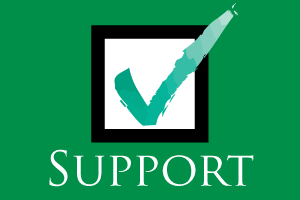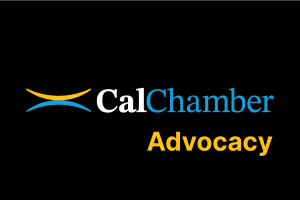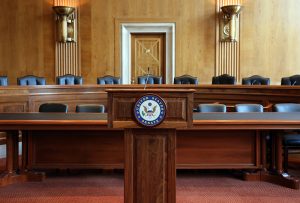Labor and Technology
Striking the Right Balance Key to Allow Innovation, Adoption of New Technologies
Recent focus on artificial intelligence and automation has revived policy discussions regarding the role of technology in the workplace. While these discussions are not new and have been happening for decades, there has been a growing trend amongst state legislators to regulate technology at a more granular level in the workplace context. It is critical that any such regulations strike the delicate balance between maintaining a robust, safe workforce and not discouraging innovation and adoption of new technologies.
Recent Industry-Specific Legislation Regarding Automation
Two recent legislative proposals aimed to slow or even eliminate automation within specific industries.
The first was SB 1446 (Smallwood-Cuevas; D-Los Angeles; 2024), which would have significantly restricted the circumstances under which self-checkout machines and other new technologies could be used in certain grocery and retail stores. While held out as an anti-retail theft measure, the bill (notably not part of the Legislature’s retail theft package) in fact was about store staffing and limiting technology adoption. The bill would have imposed staffing ratios, placed a legal limit on the number of items that could be scanned at self-checkout, and mandated how many staffed checkout lanes must be open. The precedent of regulating operations at such a granular level that stores could not decide when and how to staff their machines or how many items could be taken through a machine was of concern to the business community at large.
The bill also included a provision that would have required a “worker and consumer impact assessment” any time new technology was introduced in the store along with a 60-day waiting period. As drafted, the assessment would have captured only the negative consequences of the technology, not the benefits. The assessment would have been required for everything from self-checkout machines to equipment detecting refrigerator leaks to product scanners and would have deterred implementation of new technology.
Another bill was a second attempt at stopping the use of autonomous vehicles over a specified weight from operating on public roads, even for testing purposes, unless a person was physically present in the vehicle. The bill, AB 2286 (Aguiar-Curry; D-Winters; 2024), ultimately was vetoed, as was its predecessor AB 316 (Aguiar-Curry; D-Winters; 2023). In his veto message, the Governor committed to working with stakeholders to further efforts regarding safety and jobs, and importantly noted the need to balance innovation with workforce protection:
“Recognizing that our workforce is the foundation of our economic success, California leads the nation with some of the strongest worker protection laws. Our state also is renowned globally as a leader in technological innovation. We reject that one aim must yield to the other, and our success disproves this false binary. But advancing both priorities requires creativity, collaboration, and a willingness to work together to identify pragmatic solutions.”
This statement encompasses the issue well — any efforts to regulate technology in the name of jobs must be done through balanced policy.
Use of Technology in Hiring
Similarly, there has been increased discussion regarding the use of automated systems in employment, with a particular focus on hiring and recruitment. According to a recent survey by the Society for Human Resource Management (SHRM), about 26% of organizations use artificial intelligence in some way to support HR functions. More than 60% of those users utilize it for hiring and recruitment purposes.
The survey demonstrated that the majority of those who use technology in their hiring processes said it improved their efficiency and that it also helped them recruit a more diverse workforce. The technology helped them locate and recruit candidates that may not otherwise have applied and human resources (HR) personnel saved time in reviewing applications, meaning organizations were able to offer jobs more quickly. For industries with high application volumes, the ability to use technology is critical.
As with the automation of job functions, there has been a rush to impose limitations and obligations on the use of this type of technology. Two separate agencies, the California Privacy Protection Agency and the Civil Rights Council, both are undertaking rulemaking regarding automated decision tools at the same time. Concerningly, they are not coordinating with each other.
At the same time, the Legislature considered but did not pass legislation, AB 2930 (Bauer-Kahan; D-Orinda; 2024), that would have required assessments to be performed on automated decision tools, certain opt-out opportunities, and notices to employees. For an industry with a large applicant pool like a national retailer or staffing industry, mandating an opt-out of certain screening processes or mandating individualized notices could upend hiring and make it far more difficult and slower to fill positions. It is anticipated that AB 2930 will be reintroduced in 2025.
To the extent there is concern about the use of these tools screening out certain applicants, remedies exist under current law. Both federal and California law provide a means for a plaintiff to file a disparate impact case under existing anti-discrimination laws. Indeed, the Equal Employment Opportunity Commission (EEOC) has started bringing cases against organizations utilizing software that it alleges are screening out protected groups. (See EEOC v. iTutorGroup) The existence of these laws like the Fair Employment and Housing Act and Unruh Civil Rights Act underscore the importance of careful and precise rulemaking rather than rushed attempts to overcomplicate issues that already are accounted for in existing statutes.
CalChamber Position
It is critical that technology regulation be thoughtful and carefully crafted. Regulations or legislation that overreaches will deter the creation or use of technologies that have demonstrated positive impacts on HR functions.
February 2025

Agriculture and Resources
California Environmental Quality Act (CEQA)
Climate Change
Education
Energy
Environmental Regulation
Health Care
Housing and Land Use
Immigration Reform
International Trade
Labor and Employment
Legal Reform
Managing Employees
Privacy
Product Regulation
Taxation/Budget
Tourism
Transportation
Unemployment Insurance/Insurance
Water
Workers’ Compensation
Workplace Safety
Related News
Privacy Bills
Coalitions
Committees
Staff Contact
 Ashley Hoffman
Ashley Hoffman
Vice President and Deputy Chief of Staff for Advocacy
Labor and Employment, Workers’ Compensation








